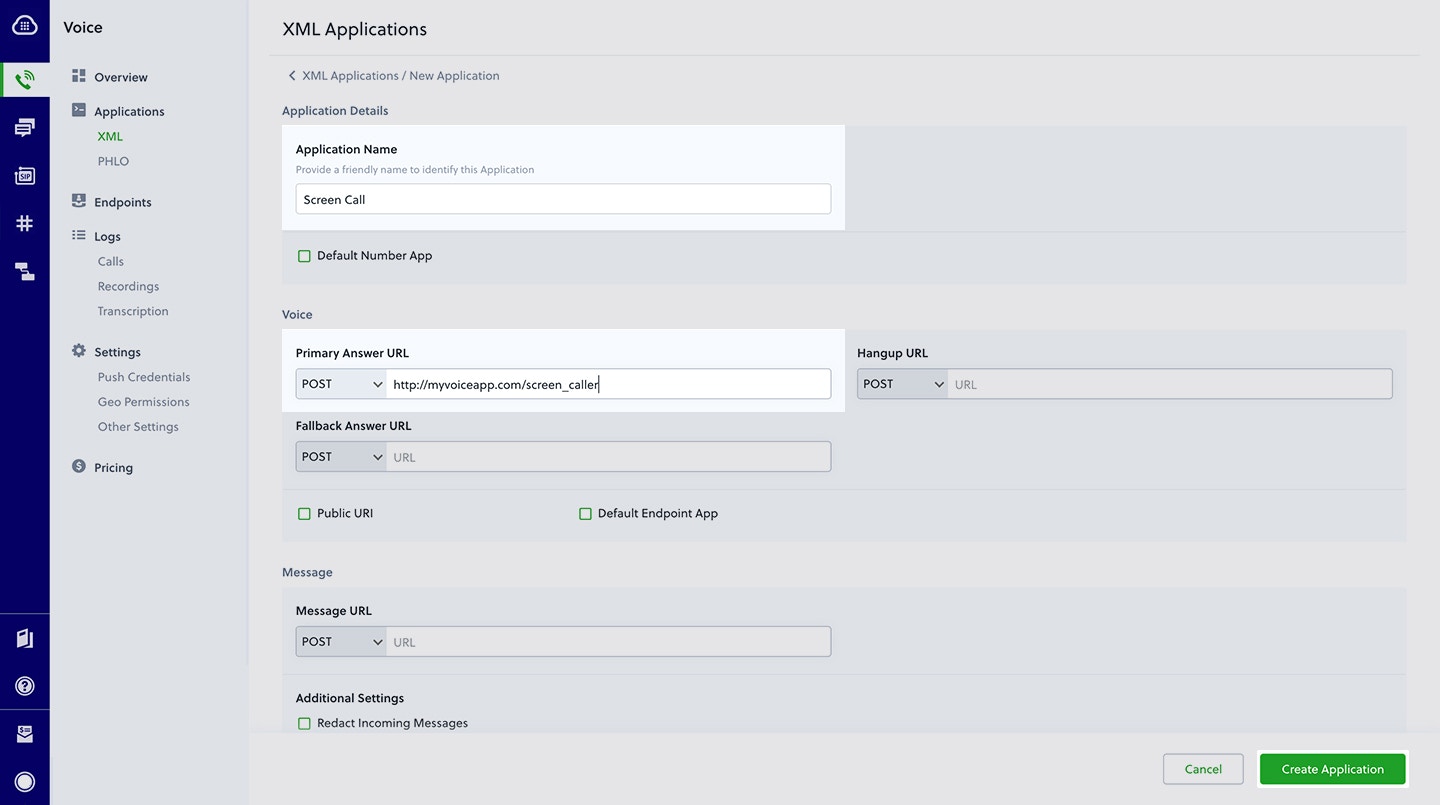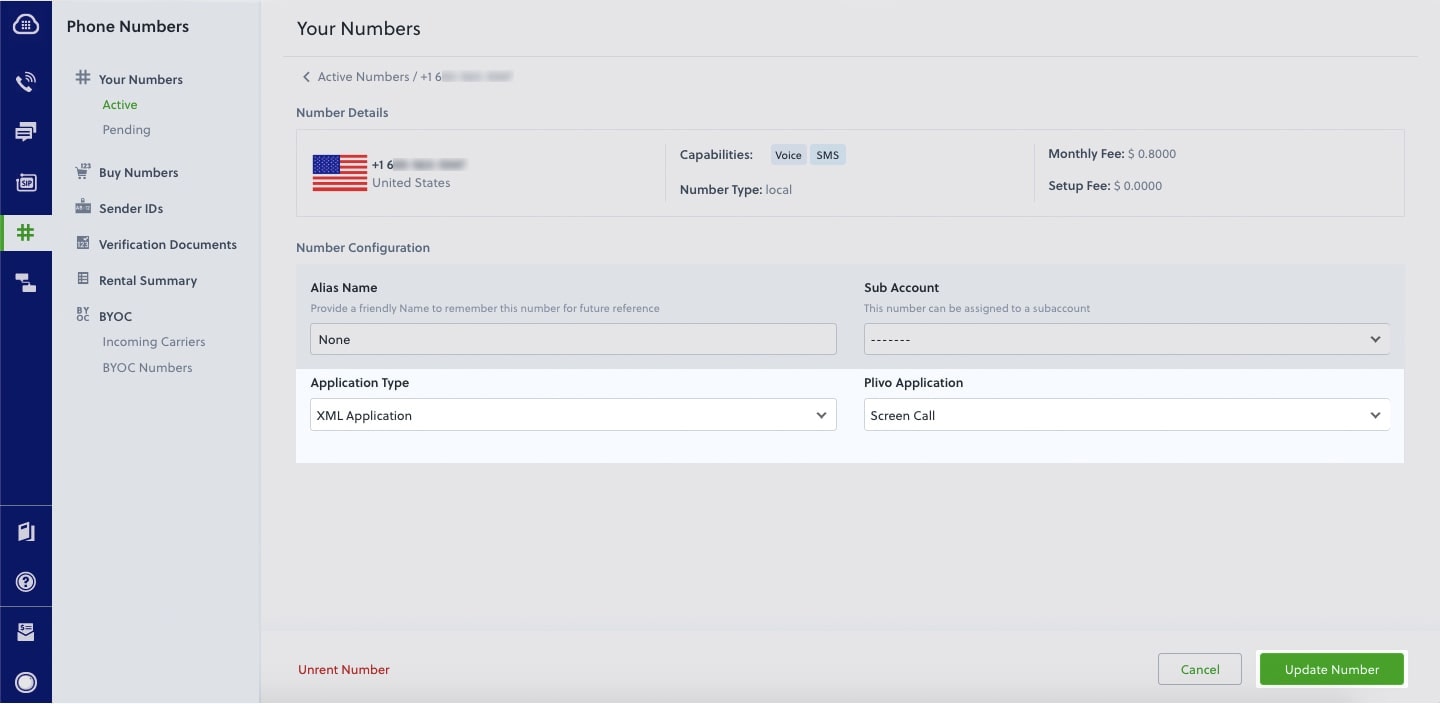- Node
- Ruby
- Python
- PHP
- .NET
- Java
- Go
Overview
When you don’t want to receive calls from a specific phone number or even a whole country, follow the instructions in this guide to create an application to block phone numbers or country codes associated with incoming calls.You can screen incoming calls either by using our PHLO visual workflow builder or our APIs and XML documents. Follow the instructions in one of the tabs below.- Using XML
Here’s how to use a Plivo XML document that screens incoming calls on a Plivo number.


How it works

Prerequisites
To get started, you need a Plivo account — sign up with your work email address if you don’t have one already. You must have a voice-enabled Plivo phone number to receive incoming calls; you can rent numbers from the Numbers page of the Plivo console, or by using the Numbers API. If this is your first time using Plivo APIs, follow our instructions to set up a Node.js development environment and a web server and safely expose that server to the internet.Create an Express server to screen incoming calls
Create a file calledscreen_call.js and paste into it this code.Create a Plivo application to screen calls
Associate the Express server you created with Plivo by creating a Plivo application. Visit Voice > Applications in the Plivo console and click on Add New Application, or use Plivo’s Application API.Give your application a name — we called oursScreen Call. Enter the server URL you want to use (for example https://<yourdomain>.com/screen_call/) in the Answer URL field and set the method to POST. Click Create Application to save your application.
Assign a Plivo number to your application
Navigate to the Numbers page and select the phone number you want to use for this application.From the Application Type drop-down, selectXML Application.From the Plivo Application drop-down, select Screen Call (the name we gave the application).Click Update Number to save.